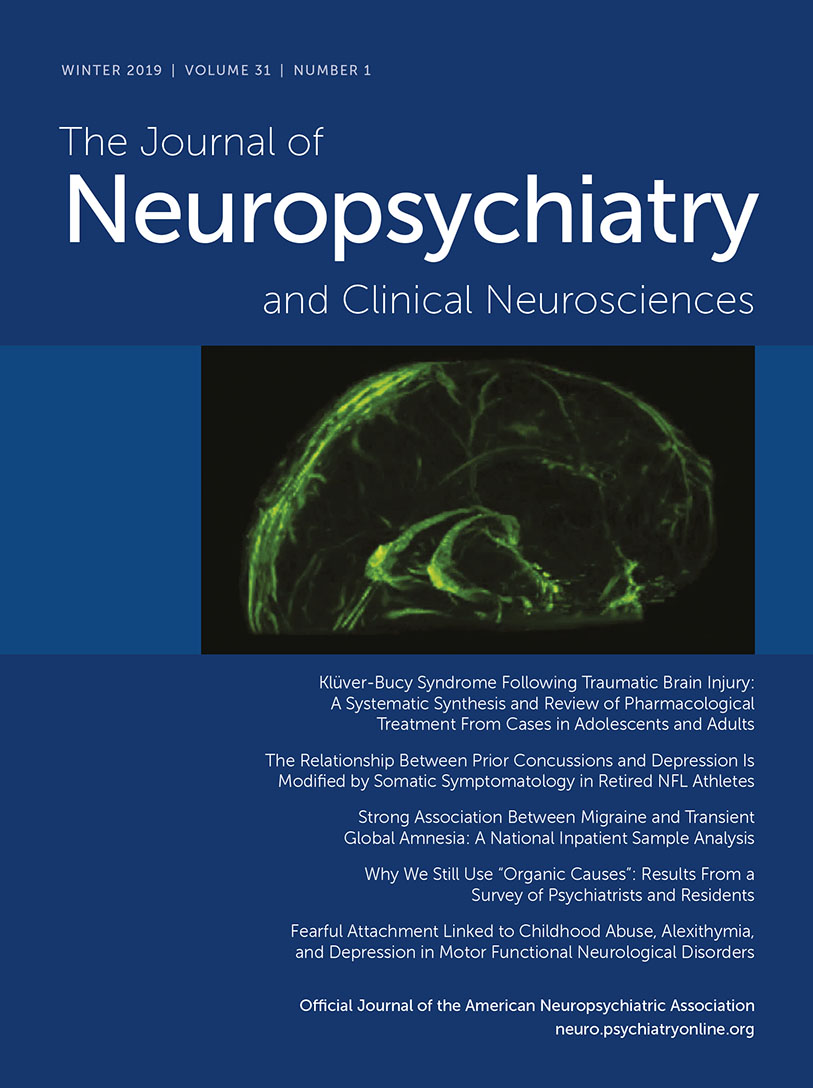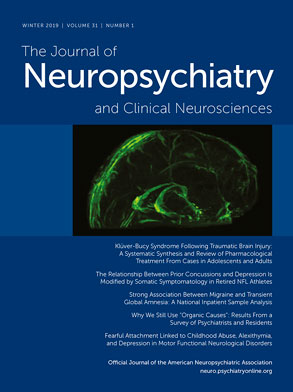Nonmotor symptoms such as anxiety and depression are highly prevalent in people with Parkinson’s disease, with prevalence ranging from 26% to 65%, and these symptoms may also coexist.
1 Both symptoms have a marked impact on activities of daily living, balance, gait, and quality of life,
1,2 and they have been shown to be associated with falls.
2 Furthermore, anxiety has been described as a predictor of activity avoidance due to fear of falling, a factor that may also contribute to gait impairment in people with Parkinson’s disease.
3 Gait disorders are among the most disabling features of the disease; 20% to 60% of individuals with Parkinson’s disease present with freezing of gait.
4 This phenomenon is a brief and episodic inability to generate effective steps
5,6 that typically occurs while starting to walk, turning, reaching a destination, or passing through narrow passages.
5 It is considered a strong predictor of falls
7 and has a major impact on mobility
4 and quality of life.
8Besides the association between freezing of gait and Parkinson’s disease severity,
8,9 it has been suggested that nonmotor symptoms, such as anxiety
10 and cognitive impairment,
5,6 not only are related but also may be involved in the pathophysiology of the phenomenon.
5,6 Among mechanisms previously described to elucidate freezing of gait,
6 the interference model highlights the role of the limbic system. Based on this model, freezing of gait may arise due to a breakdown of concurrent inputs from cognitive and limbic loops during motor tasks, leading to neuronal crosstalk between the basal ganglia circuits and overloading the striatum.
6 If anxiety represents a limbic overload and triggers freezing of gait,
10,11 it might be argued that anxiety plays a role not only in the frequency of freezing of gait
11 but also in its duration.
Therefore, the aims of this study were to identify the association between freezing of gait and anxiety, depression, cognitive impairment, balance confidence, and quality of life; identify the association between anxiety and balance confidence; and determine factors that contribute to the severity of freezing of gait in people with Parkinson’s disease.
Discussion
This study focused on the association between the presence and severity of freezing of gait and symptoms of anxiety and depression in people with Parkinson’s disease. Nearly one third of participants were classified as having freezing of gait. Disease severity, higher antiparkinsonian medication intake, anxiety, depression, a history of recurrent falls in the past year, disability, and reduced balance confidence were associated with freezing of gait. However, multivariate analysis showed that only disease severity, anxiety, and higher antiparkinsonian medication intake were independent contributors to freezing of gait severity.
In our study, about one third (35%) of participants had freezing of gait, in line with previous findings.
4 As expected, disease severity (Parkinson’s disease duration, UPDRS motor, and Hoehn and Yahr scale) was associated with freezing of gait, a well-established risk factor for the onset of the phenomenon.
8,9 Higher antiparkinsonian medication intake, as measured by using the levodopa equivalent dose, was also associated with freezing of gait, in line with previous studies.
8,9 This may reflect disease severity and an attempt to alleviate freezing of gait episodes.
22Consistent with previous evidence, both anxiety (HADS-A)
2,11 and depression (HADS-D)
2,8 were associated with freezing of gait. Stressful situations, such as moving under time constraints, walking in crowded places, and performing a secondary task, are related to freezing of gait, suggesting its interaction with anxiety.
4,5 Moreover, both anxiety
24 and depression
25 have been found to be associated with increased stride time variability, an impairment related to freezing of gait.
6 The link between mood disorders and freezing of gait may be explained by the contribution of limbic circuits to the underlying pathophysiology of the phenomenon.
6Interestingly, higher level of anxiety was shown to be associated with lower balance confidence, a factor related to postural instability and falls in people with Parkinson’s disease.
3,25 Although cause and effect conclusions cannot be drawn from this relationship, we argue that anxiety may act as a stressor, leading to feelings of not being able to perform some activities without imbalance or falling. On the other hand, an individual may have to perform some activities even if there is a lack of balance confidence for them, which in turn may contribute to anxiety. Freezing of gait would be likely to occur during both situations, given their stressful nature.
A history of recurrent falls in the past year, disability (Schwab and England scale and UPDRS-ADL), reduced balance confidence (Activities-Specific Balance Confidence scale), and quality of life (PDQ-8) were also associated with freezing of gait. Falls and freezing of gait are two closely related phenomena.
4 Freezing of gait can suddenly disrupt balance and put people with Parkinson’s disease at risk of falling, being considered a strong predictor of increased fall rates and frequent falls.
7 Freezing of gait may also lead to reduced balance confidence,
25 especially for performing tasks that are more challenging to balance and more likely to elicit freezing of gait, such as sweeping the floor, walking in a crowed place, being bumped, and walking on a slippery surface, as measured by using the Activities-Specific Balance Confidence scale. Therefore, freezing of gait may contribute to greater disability
22 and reduced quality of life.
8Not surprisingly, most variables associated with the presence of freezing of gait were also associated with its severity. However, motor fluctuations only showed an association with freezing of gait severity. This may be explained by the higher frequency and longer duration of freezing of gait episodes during “off” states.
22The results of the multivariate analysis showed that disease severity, as measured by using the Hoehn and Yahr scale, was the strongest contributor to freezing of gait severity; it accounted for a high proportion of the variance in FOG-Q severity scores. Anxiety and levodopa equivalent dose were also independently associated with freezing of gait severity. These findings provide additional support for the contribution of anxiety to greater freezing of gait severity,
11 taking into account not only the frequency but also the duration of the episodes. Since cognitive-attentional strategies are required to overcome freezing of gait episodes,
5,10 the association between anxiety and freezing of gait severity might be explained by the relationship between anxiety and set-attentional shifting impairment; people with Parkinson’s disease who are anxious may take more time to switch attention between tasks.
11 Thus, anxiety may exacerbate freezing of gait and make episodes last longer time.
The main strength of this study is that potential contributors of freezing of gait severity were simultaneously evaluated. Since anxiety may be a modifiable risk factor,
1 our findings support a need to routinely screen for mood disorders in people with Parkinson’s disease who present with freezing of gait. Future trials should evaluate whether treating anxiety with pharmacological and/or cognitive-behavioral therapies may reduce the frequency and duration of freezing of gait episodes. We acknowledge that freezing of gait may be under- or overestimated, as the FOG-Q is a self-report measure. However, the examiners demonstrated to all participants different types of freezing of gait episodes or showed videos to minimize this potential bias. Also, the smaller number of participants with freezing of gait might have influenced the number and strength of contributors that were found.
In summary, anxiety was found to be an independent contributor to freezing of gait severity and should be evaluated in people with Parkinson’s disease who present with freezing of gait. Future prospective studies are needed to explore the relationship between anxiety levels and the onset, frequency, and duration of freezing of gait episodes.

